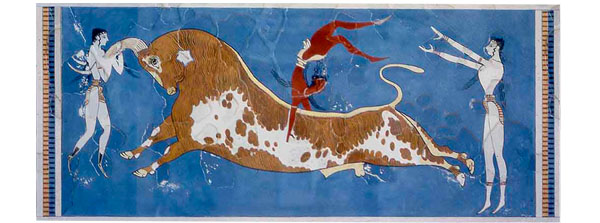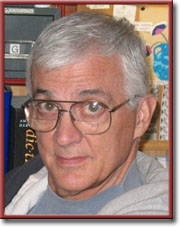The Esperanto of Science: The Metric System

Skip the B.S.
By Skip Eisiminger

“Weavers had to know that three inches of yarn made a palm’s worth; three palms made a span; five spans made an ell; ninety-six ells made a skein, and 120 skeins made a spindle. Yet if there was a barleycorn’s worth of difference in that first inch, the length of yarn on the spindles could vary considerably. Brewers, tanners, fish mongers, and grain merchants each had their own system.”—Skip Eisiminger
“This [Satanic metric system] came out of the Bottomless Pit.”—Anonymous 19C American minister
“Having spurned the invitation to help create the metric system and refused to implement it for over two centuries, America cannot forgive France’s achievement.”—The Wordspinner
 CLEMSON South Carolina—(Weekly Hubris)—12/30/2013—I recall my German wife’s frustration shortly after we married when some bread she’d baked left the oven with the consistency of fresh Play-Doh.
CLEMSON South Carolina—(Weekly Hubris)—12/30/2013—I recall my German wife’s frustration shortly after we married when some bread she’d baked left the oven with the consistency of fresh Play-Doh.
It seems that “cup” in my aunt’s recipe was a unit of volume, not the weight unit she was accustomed to. An American cup of flour, therefore, might weigh anywhere between 25 and 65 grams, depending on how densely it was packed. We ate that gummy loaf anyway because we couldn’t afford to throw it away.
The advantages of the metric system were further clarified to me when my father-in-law and I built a desk. I was accustomed to the American weights and measurements system; he naturally preferred the metric, the only scheme he’d ever used. Because he was more experienced, and a guest, I went metric. When Otto asked me to cut a piece of molding 38 centimeters long, I soon realized that that measure was easier to locate on my bilingual tape than 14 15/16 inches. Before the project was completed, I bought a Sears meter stick and a set of metric wrenches. The old adjustable wrench my father had given me had worn its last hex head round.
In 1585, the Flemish mathematician Simon Stevin conceived of a decimal system of weights and measures, but it would take another two centuries before the French Academy of Science would hammer out a concrete proposal to revalue the “King’s pound” from 489.5 grams to 500. Though the French invited representatives from America and Great Britain to assist, it fell to those revolutionaries heady with power to see the project through in 1792. Ironically, the Dutch adopted the system 16 years before their French neighbors probably because they kept the old names like “duim” (thumb) for “inch” and “ons” for “ounce” while rounding their values.
Why the change? From the standpoint of manufacturers and merchants with ambitions to sell outside their town or county, early 18th-century Europe was fraught. In England, there were hundreds of terms such as “mickey,” “noggin,” “chaldron,” “firkin,” and “gill.” Across the Channel, within a 30-mile radius of Baden, Germany, a traveling merchant might encounter 112 different standards of length and 80 measures of weight. And in France, one historian has recorded nearly 900 terms for “yard,” “quart,” “pound,” and the like.
Linear measurements like “foot” (often the king’s), “hand” (distance across a closed hand), “cubit” (distance from the elbow to the middle fingertip), “span” (distance across an open hand), and “inch” (a twelfth of a foot) often originated in reference to the human body. Of course, all of these measures are subjective because with a new regime came new hands and feet.
Smaller units frequently required outside references which were equally subjective: four poppy seeds, for example, equaled one barleycorn, and three of those made an inch. Weavers had to know that three inches of yarn made a palm’s worth; three palms made a span; five spans made an ell; 96 ells made a skein, and 120 skeins made a spindle. Yet if there was a barleycorn’s worth of difference in that first inch, the length of yarn on the spindles could vary considerably. Brewers, tanners, fish mongers, and grain merchants each had their own system.
Another area in which there was little unanimity lay in the measurement of temperature. In 1724, Daniel Fahrenheit had set 32 and 212 as water’s freezing and boiling points, respectively. In 1742, when Anders Celsius offered his decimalized system to the world, with 0 and 100 being water’s two extremes, the scientific world was quick to recognize the advantages of this simpler system, but the conversion to Centigrade took more than 200 years. Today, only the US and Belize cling to the Fahrenheit scale. (Frankly, the speed at which this country moves makes one yearn sometimes for a benevolent dictator.)

Though France was not ruled by a dictator when the metric system was devised, the decision to decimalize the clocks and calendar was worthy of a Napoleon. Virtually overnight, the French were expected to deal with hundred-second minutes and hundred-minute hours. The shift was overwhelming. Apparently without thinking the irradical order through, the revolutionary council assumed the folk would abandon serviceable timepieces and purchase ten-hour clocks but, as most of us could have told the council, humans are sentimentally inclined toward timepieces. Indeed, I occasionally carry my grandfather’s silver pocket watch even though it has stopped running and cannot be repaired.
The Republican Calendar stood a better chance of succeeding, but the new “aristocracy of rationalists” tossed out the traditional names of the months and replaced them with the Latinate likes of Thermidor (Heat-giving) for July and Fructidor (Fruit-giving) for August. Some British satirist translated the twelve new names starting with October: “Wheezy, Sneezy, and Freezy; Slippy, Drippy, and Nippy; Showery, Flowery, and Bowery; Wheaty, Heaty, and Sweety.” Except for a handful of poets and composers, few liked the changes.
Clock reform along with the 400-degree circle was tabled by the legislature in 1795, where it lies to this day, while the calendar lasted twelve years before it was scrapped by Napoleon.
Little by little, countries across the world saw the virtues of standardizing weights and measures but, in the US, the church led the opposition to reform. Despite the fact that the commandments of Leviticus had already been decimalized by Moses, the argument went something like this: “The metric system is a product of the ruthless French Revolution which deposed God and replaced Him with Madame Reason or Lady Liberty. Though one of Liberty’s statues still graces New York harbor, her sisters, who once stood in such places as Notre Dame de Paris, are anathema to Christians. Americans would be well advised to avoid anything spawned by that upheaval.”
American manufacturers have also been averse to change because of the retooling costs that switching would involve. That’s understandable, but if I’m living in Asia or Africa, where five of the world’s seven billion people reside, and I’m contemplating the purchase of my first automobile, I may lean toward the brand that has nuts and bolts I can tighten at home. Still, the US auto industry essentially has said, “Give the world 2.54 centimeters and they’ll take a mile.” Besides the US, the only countries left agreeing with our insularity are Myanmar and Liberia, and both of these disadvantaged states are actively seeking to switch systems.
Some Internet wag once wrote, “1000 aches equals 1 kilohurtz” which, while clever, is unpersuasive. My response to that implicit argument is to note the ease with which Americans have quietly adopted the liter bottle of soda, the 9 mm handgun, the 1000 cc moped, and the kilo of marijuana. A ten-year old Chinese student I once tutored in English told me after earning high marks on an arithmetic test, “I have an abacus in my heart.” I said it was probably in her head, and most of us have one. The metric system, like the decimalized abacus, just makes it easier on all the organs involved.
3 Comments
JohnS
I agree with many of the points you made. However, you should be aware the Big Three (US auto manufacturers) largely metricated their designs in the 70’s.
There are a few exceptions; for some reason wheel sizes are inches everywhere, hence radial tires with width in millimeters, but they fit a wheel size with diameter in inches. But US autos are about as metric as foreign autos. You need a set of metric wrenches to work on a US car; you may need a few Customary wrenches as well, but mostly metric.
eric
A very nice piece preaching to the converted. What a pity that Americans keep on shooting into their own “feet”.
Skip
John and Eric, Thanks for the comments. Our mechanic has both standard and metric wrenches at the ready. Next time I see him, I’ll ask which he uses more often. Sometimes a metric wrench is the same size as a standard one. As for me, I’ll hold on to my adjustables because a bunged-up nut may not take metric OR standard. Skip